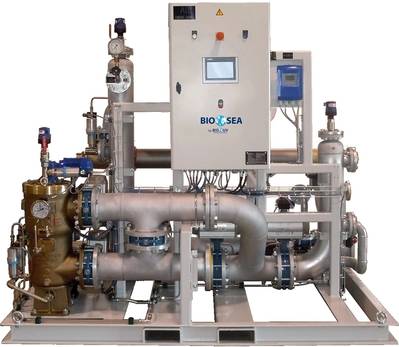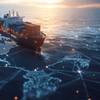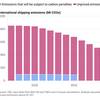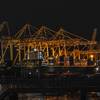French company BIO-UV possesses more than 15 years of experience in UV water treatment for drinking water, wastewater, industrial processes, and has mastered the design of UV reactors to ensure performance suitable for the technical environment.
The company designs and produces the UV systems directly in its factory in France, ISO 9001:2000 certified since 2010, and has gained many other international certifications, including NSF, ONORM, UL, IMO statutory approval, BV class approval and more.
For ballast water treatment, however, where waters have diverse and complex characteristics, BIO-UV began five years ago to design a system compliant with the IMO and USCG Regulations to handle a wide spectrum of water quality (fresh, brackish, marine), taking into account possible low transmittance. The resulting ballast water treatment system is BIO-SEA by BIO-UV.
The UV reactor that was designed in bronze aluminum and titanium is corrosion-resistant and delivers high performance with only one single medium pressure UV lamp of 22kW. The high UV dose is automatically adapted, in real time, to the quality of water to be treated.
This BIO-SEA design allows the reactors to be connected in parallel, offering flexibility in terms of flow rate management, while also facilitating easier integration in retrofits.
The ballast water treatment system’s performance has already been validated through multiple IMO and USCG tests campaigns (MPN and/or CMFDA), undertaken over the past four years with various laboratories, including DHI, GO CONSULT and MERC.
These performances have also been confirmed via numerous newbuild projects and retrofits installations, with shipowners such as CMA CGM, and commercial/service partners such as Damen Group, able to offer turnkey retrofit projects.
Regarding the specificity of the USCG type approval, thanks to the modular design of the BIO-SEA system and its high UV dose, BIO-UV said it can ensure to shipowners and to commercial and technical partners that the BIO-SEA by BIO-UV system, as originally designed, will be compliant in every type of water, in accordance with USCG’s latest decisions, even in low transmittance waters. Therefore it is and will be possible to remain competitive while being compliant with the IMO and USCG requirements, the manufacturer said.
Given the knowledge and historical experience in the treatment of microorganisms by UV and in performance certifications (ÖNorm, NSF and DVGW), the MPN method accepted by the IMO sufficiently ensures the risk reduction of invasive species in the marine environment, as requires the BWM Convention. The actual issue concerns the rather limited scope of performance (water qualities, transmittance levels , QA test plan, details on certificates) of some of the systems approved before strengthened certification requirements.
Shipowners and their advisors therefore need to be very cautious on the selection of systems and the conditions of the performed tests.
The BIO-SEA by BIO-UV systems have been granted IMO Type Approval in 2013, and have obtained USCG acceptance as AMS.
Being already in line with the IMO and USCG discharge standards with MPN method after a test campaign conducted in 2015, BIO-UV will undertake a series of complementary tests in 2016 to demonstrate the compliance of the current system regardless of the methods chosen by the USCG.
Over the next few months, BIO-SEA systems will continue to be used worldwide, in all water types, even at low transmittance.
According to BIO-UV, the BIO-SEA system remains competitive, modular, chemical-free, with no risk of coating corrosion in ballast tanks and is environmental-friendly.















